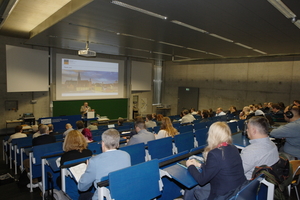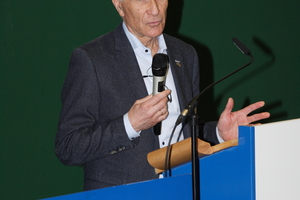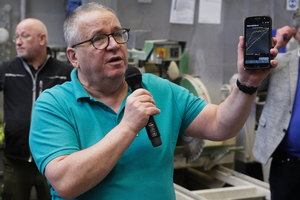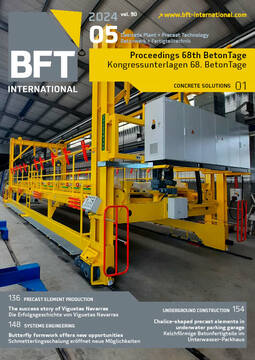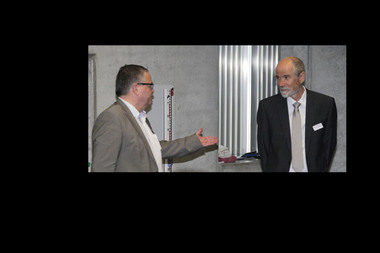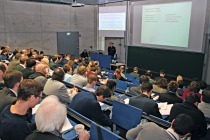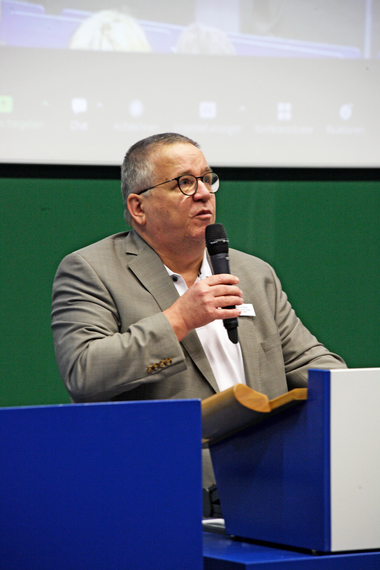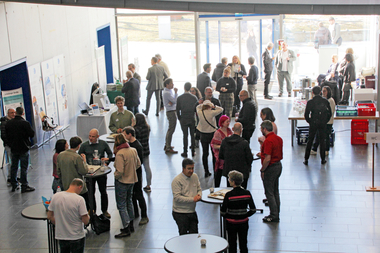33rd Rheology Conference at OTH Regensburg
In late February of this year, the East Bavarian University of Applied Sciences (OTH) in Regensburg, Germany, held its 33rd Rheological Conference, headed by Prof. Charlotte Thiel. The Conference was held in collaboration with Schleibinger Geräte Teubert u. Greim GmbH, based in Buchbach, Germany. The company is a global leader for rheological measuring instruments known as rheometers. At the conference, over a day and a half, the focus was on the parameters of liquid and/or viscous construction materials – above all concrete, cement and mortar.
Rheological lectures
After welcoming the conference participants by the Dean of the Faculty of Civil Engineering at OTH Regensburg, Prof. Andreas Ottl, among others, Callum White from the University of Cambridge opened the conference with his lecture. His research activities focus on the development of traditional slump tests.
Daniil Mikhalev of TU Dresden, in his lecture, dealt with active utilization of process data.
A research project at the University of Hanover, as reported by Christian Vogel, pursues a similar direction. Here, the objective is recording concrete quality during discharge from truck mixers.
In his lecture, Dr. Alexander Mehzov, from the Federal Institute for Materials Research and Testing (BAM) in Berlin, presented the possibilities of biological superplasticizers for reducing the carbon footprint during concrete production.
Dr. Oliver Mazanec of Master Builders Solution Deutschland GmbH presented a new generation of superplasticizers and, in that context, the intelligent cluster system technology (ICS). His company has developed additives on PCE polymer basis for continuing to meet the required concrete properties.
Mareike Thiedeitz of TU Munich dealt in her lecture with comparison of small and large gap rheometry and its mathematical representation.
Ludwig Hertwig of HTWK Leipzig investigated in his lecture how, in particular, tensile strength can be improved by using crushed aggregate.
Parvathy Kizhakkiniyedath Mohanan from the Helmut Schmidt University of Hamburg described in her presentation the rheological behavior of tremie concrete. This method involves delivery of concrete by means of piping (tremie piping) into deep-lying areas.
Laboratory workshop on Thursday
The Rheological Conference was live-streamed to the Internet, and linked-up viewers were able to participate in the Q&A Round Table and to ask questions.
On Thursday, on the second day of the Conference, the participants met for an application workshop in the construction materials laboratory at OTH Regensburg. Dr.-Ing. Stephan Uebachs, Managing Director of the Aachen office of the company Brameshuber + Uebachs Ingenieure GmbH, gave a presentation on the basics of work performed in this laboratory. Markus Greim followed by presenting metrological work with the Schleibinger Viskomat NT rheometer, which was developed for work in the laboratory. The group then moved to the large Experiment Hall, in which two additional rheometers were presented.
Fresh-concrete rheometer
The eBT-V is a mobile, electrically operated, network-independent rheometer for fresh concrete that allows easy verification of the flow resistance of fresh concrete at construction sites. It can determine both the relative yield point and the relative viscosity. This instrument offers two different modes: the P-mode is intended for conventional vibrated concrete and investigates relatively stiff concrete. For measuring, a bulb sensor affixed to a short vertical rod is lowered into a round measuring trough, which begins to rotate for measuring the required shear resistance.
Schleibinger Sliper – sliding pipe rheometer
Liquid concrete is increasingly pumped through pipes and hoses to a specific point at the construction site – sometimes over enormous differences in height. The Sliper rheometer determines the flow behavior of concrete in such pipes or hoses. It realistically simulates the placement situation and is easy to set up and operate on the construction site.
The Sliper consists of a standing vertical plunger with a pressure sensor on its head and a motion sensor on its enclosure. Over this plunger, a transparent plastic cylinder is placed and initially locked in the lower position. The transparent cylinder now extends the plunger by one meter, which fills sample material to its top. In the next step, the plunger is pushed manually into its upper position, one meter higher. The cylinder is now released for measuring and slides down to its lower position. Measurement takes place of the time required and the resulting contact pressure of the concrete mix on the upper side of the plunger.
Text: Robert Mehl
CONTACT
Schleibinger Geräte Teubert u. Greim GmbH
Gewerbestraße 4
84428 Buchbach/Germany
+49 8086 94731-10

